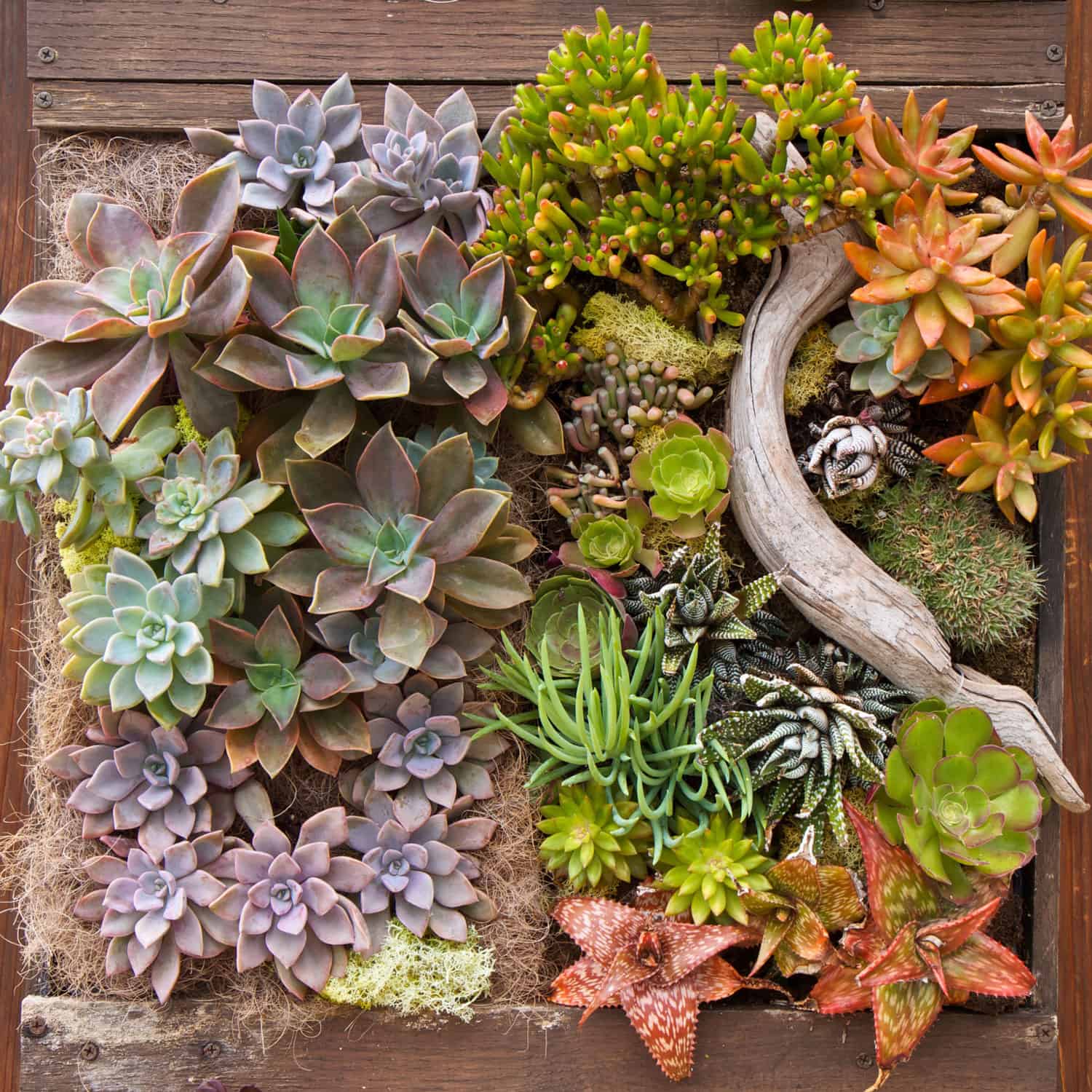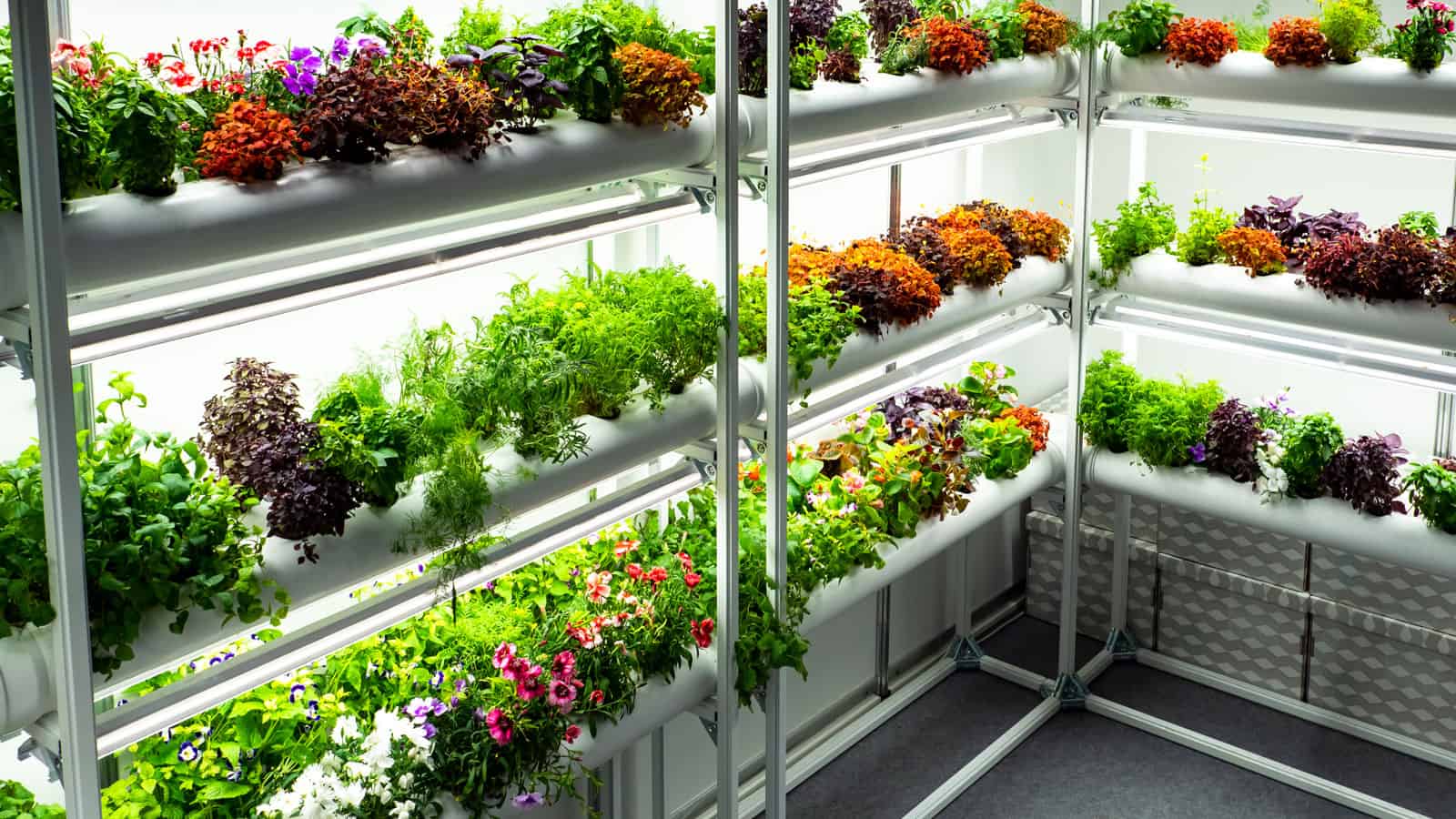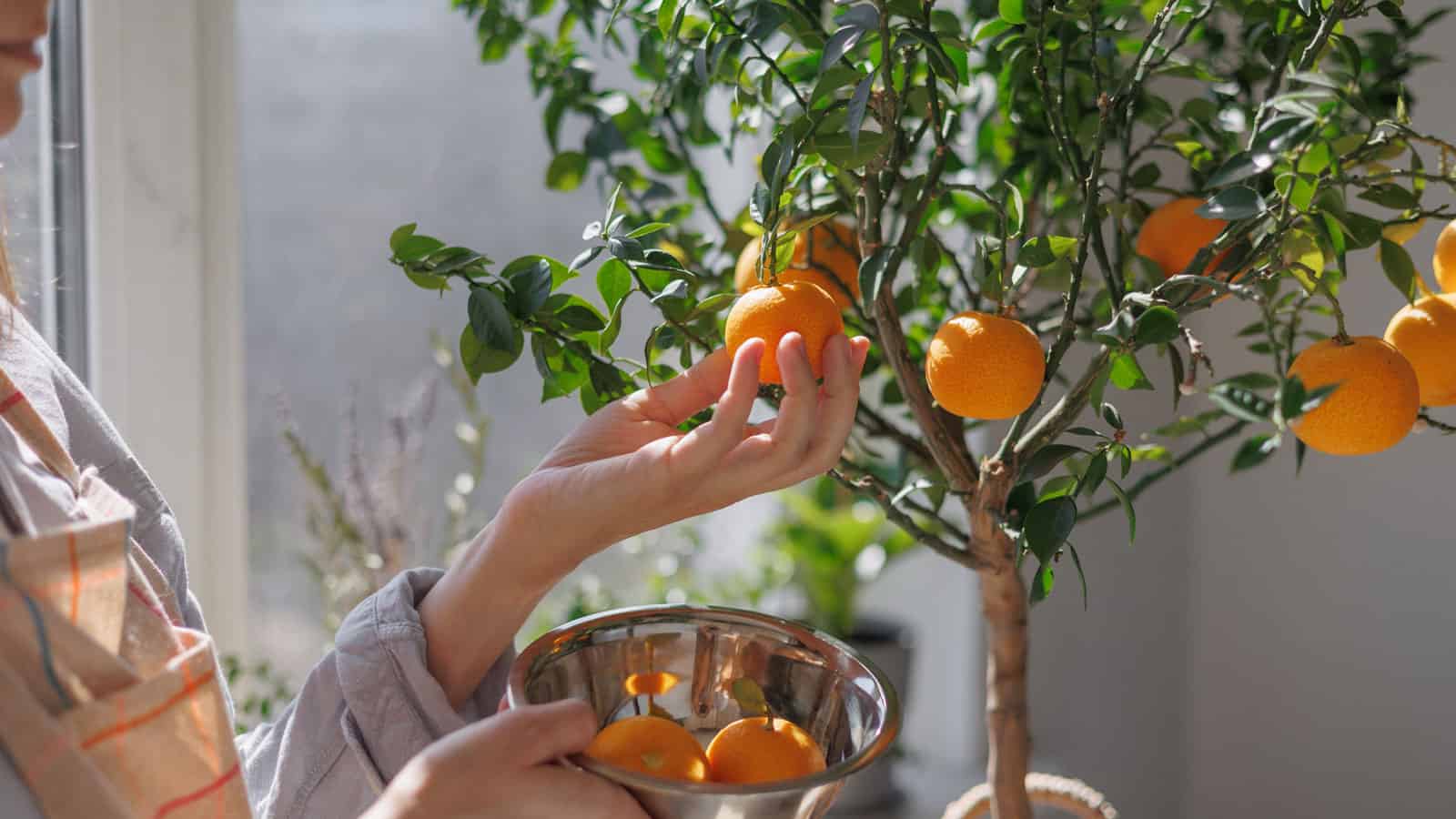Winter can feel endless, especially for those who love to garden. But guess what?
You don't have to wait for spring to get your hands dirty cultivating plants. Indoor gardening projects offer an exciting escape from the cold, bringing a touch of spring right into your home.
Whether you're looking to spice up your kitchen with some homegrown herbs or have fun with colorful succulents, indoor gardening makes it all possible year-round.
So, let's roll up those sweater sleeves and dive into some vibrant, life-affirming gardening projects perfect for the winter chill!
Project #1: Terrarium Building
Creating your own terrarium is a delightful way to bring a slice of the outdoors inside.

With a selection of small plants—ranging from the frilliest of ferns to the most delicate of mosses—you can make your thriving terrarium.
Follow these steps:
- First, pick a clear glass container that appeals to your taste. Maybe go for a classic bowl shape or something more unconventional like an old lantern.
- Add a foundational layer of rocks or pebbles. This vital step ensures adequate drainage for your terrarium.
- On top of this, add a sprinkle of activated charcoal. This keeps the water fresh and wards off any bacterial growth.
- Next comes the soil layer, where your plants will put down roots. Choose a soil type that matches the plants you want to grow.
- Now for the fun part—planting! Select small plants that won't outgrow your container too quickly. Use a spoon or a tweezer to nestle them into the soil gently.
Your terrarium doesn't need much water. It has its mini water cycle inside.
Just check the moisture levels occasionally and mist it if it seems dry. Place it in a spot with indirect light, and you're all set!
Ready to embark on your terrarium adventure? Here are some beginner-friendly moss kits to to kickstart your indoor gardening journey.
Project #2: Succulent Mosaic Wall
Imagine transforming a dull wall into a vibrant tapestry of life during winter; a succulent mosaic wall does just that!

You'll be amazed how these hardy plants can breathe new life into any space. Here's what you'll need:
- A variety of succulent cuttings
- A vertical wall frame
- Sphagnum moss and soil
- A wooden or metal frame
Follow these steps to make your succulent mosaic wall:
- Choose your frame size based on the wall space available; this will serve as your planter.
- Fill the planter with soil and sphagnum moss to provide a fertile growing medium.
- Plan your design by arranging succulent cuttings in an eye-catching pattern.
- Gently plant each cutting into the moss, securing it with soil.
Your succulent wall is a living art piece that can stand out wonderfully against the bleak winter backdrop.
Plus, caring for your succulent mosaic is easy! They need minimal watering and thrive well in indoor conditions with moderate light.
Project #3: Aromatic Kitchen Garden
Starting an aromatic kitchen garden indoors is a delightful way to keep your home smelling fresh and your meals flavorful during winter.

You’ll find joy in growing your herbs, and it's easier than you might think! You can grow cold-hardy herbs like Mint, Rosemary, and Thyme.
Use small pots or containers that you can place on your windowsill or kitchen counter. Make sure they get plenty of light, as herbs love the sun.
Consider using a small grow light when daylight is scarce for an extra boost. Not only does this promote growth, but it also keeps your green buddies thriving.
For more ideas on fragrant herbs to add on your kitchen windowsill, check out this guide.
Project #4 Hydroponic Indoor Garden
Transform your home into a verdant oasis with a hydroponic indoor greenhouse.

This soil-free system efficiently grows herbs, leafy greens, and flowers using nutrient-rich water and tiered shelves with dedicated lighting.
Here's how to set up your hydroponic indoor garden:
- Start by preparing PVC drain pipes and cutting them into sections for your growing space.
- Use end caps with drilled holes to connect these pipes, ensuring water height is appropriate for plant roots to access air and avoid rotting.
- Incorporate grommets for a secure fit of connecting pipes and arrange them with adequate spacing for plant growth.
- Next, drill holes for net cups, considering the size of the cups and the spacing between plants.
- Clean and smoothen the drilled holes to ensure a snug fit for the net cups and prevent leaks. Set up an inlet for the water tube at the top of the pipe.
- Construct a shelf from materials like two-by-fours tailored to the dimensions that fit your space. This shelf will hold the PVC pipes.
- Install appropriate lighting, such as full-spectrum grow lights, making sure each grow tube has sufficient light coverage.
- Set up a reservoir for the hydroponic system, choosing a size that fits your setup and adding a pump for water circulation.
- Fill the reservoir with water, add hydroponic nutrients, and adjust the pH to between 5.5 and 6.5.
- Consider adding a timer for the lights and an air pump to oxygenate the water, enhancing plant growth.
- Plant seeds or insert seedlings into the growing media. Leafy greens like spinach and herbs like basil thrive hydroponically.
- Once mature, harvest your plants directly from your indoor setup.
You can watch this video to walk you through the steps above.
If you're not much into DIY, you can start small with this hydroponics growing system from Amazon.

Project #5 Cultivate Miniature Citrus
Brighten your winter with the vibrant hues and fresh scents of miniature citrus trees. These delightful plants bring a touch of summertime into your home during the colder months.

You're not just limited to decoration, as many dwarf citrus varieties, such as Meyer lemons and Calamondin oranges, yield delicious fruit!
For a thriving miniature citrus, follow these simple care tips:
- Sunlight: Place your tree near a south-facing window to ensure it gets at least 8 hours of sunlight.
- Watering: Keep the soil consistently moist but not waterlogged.
- Temperature: Aim for 65-70°F (18-21°C) during the day and slightly cooler at night.
Project #6: Vegetable Indoor Garden
Starting your vegetable garden indoors this winter is not just a fun way to stay busy but also incredibly rewarding.

Here's a quick guide to get you started:
- Begin with options that are known to thrive indoors. Spinach, lettuce, dwarf tomatoes, and peppers are easy to grow and adapt well to indoor conditions.
- Find a sunny spot, usually a south-facing window, to ensure your plants receive enough light.
- Use good-quality potting soil and suitable containers with drainage holes. Unglazed pots can help with airflow and moisture regulation for plants like tomatoes.
- Keep the soil consistently moist but not soggy. Monitor your indoor garden for pests, and be patient, as some vegetables might take longer to mature indoors.
With just a little bit of effort, your indoor vegetable garden can become a source of pride and joy during the cold winter months.
Project #7: Edible Mushroom Cultivation
Starting this project is a breeze, and you don’t need a magic touch—just a little guidance.
First things first, choose your favorite variety. Did you know there are over 3000 edible mushroom varieties worldwide?
Well, you don't need to know all of these for your project! You can start with the easiest ones — like Oyster and Shiitake.
Grab a grow kit or some spawn, and you’re halfway there! Here's how to successfully cultivate mushrooms at home:
- Select your mushroom type, considering the flavors and textures you enjoy.
- Prepare the growing medium or substrate according to your mushroom's preference.
- Maintain the right conditions—most mushrooms thrive at 115-140 degrees Fahrenheit.
You’ll also need to monitor moisture levels, as mushrooms love a humid environment. Be sure to keep them in a spot with some light but out of direct sunlight.
Need a hand keeping it warm? Use a heating pad to cozy up the soil for your fungal friends. Once established, you can invite them to chill out at a cooler temperature to encourage fruiting.
Eager to start growing edible mushrooms but unsure where to begin? Check out our step-by-step guide on using an all-in-one mushroom grow bag!
Wrapping Up Your Indoor Winter Gardening
As you tuck away your gardening tools and admire your indoor oasis, take a moment to celebrate the gardening achievements you've made this winter.
From sprouting microgreens on your windowsill to nurturing a lively herb garden, you've added life and vibrancy to the shorter days!
